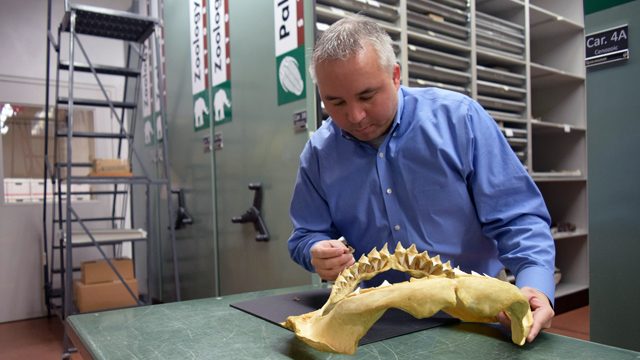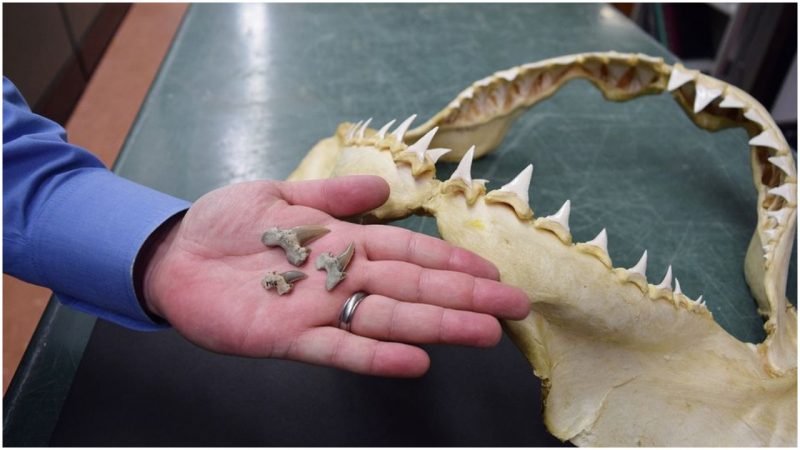New scientific research on ancient fossil teeth has provided compelling evidence of a previously unknown shark species, one that existed back in the days of dinosaurs. The species has received the formal name Cretalamna bryanti, and is also known as the Bryant Shark, after the late college football coach Paul William “Bear” Bryant, famed for winning six national championships at the University of Alabama, and breaking records of his day with 323 wins in total.
Jun Ebersole, director of the Collections Department at the McWane Science Center in Birmingham, Alabama, and leader of the study on the fossil teeth, remarked that it is surprising how, until now, this shark has been “overlooked, not recognized or misidentified by previous scientists as other shark species.”
The 33 shark teeth that are the subject of the study were found in several different locations across central Alabama over a period of almost four decades, but some samples were also retrieved from the collections of both the McWane Center and the University of Alabama’s Museum of Natural History. The largest example measures about one inch, but further study has shown that this species of shark may have been the ancestor of the megalodon shark, a monstrous giant predator that was once the largest shark to roam the world’s oceans before going extinct about 2.6 million years ago.
The findings that the Bryant Shark appears to have been an early member of the family of the megalodon sharks have been revealed in an article published on January 8, 2018, in the scientific journal PeerJ.
According to researchers, the Bryant Shark belonged to the otodontid “mega-tooth” shark family, whose earliest ancestors appeared over 100 million years ago. Eventually, over time, and after surviving the great extinction event that wiped out the dinosaurs, the Bryant Shark evolved into the enormous megalodons whose teeth have been found to grow as long as seven inches.
“These are the largest sharks that ever lived, culminating in megalodon, which was by far the world’s largest shark,” Ebersole stated. Though its teeth appear smaller and narrower when compared to those of the megalodon, and they have smaller protrusions known as cuspids on both sides of the mouth, Ebersole explains that over the following 40 million years, the otodontids could have gained serrated edges on their teeth and their cuspids vanish through the evolution process.
As a species, the megalodon would have measured up to 60 feet in length, with jaws that extended some eight feet. Currently, the largest shark to inhabit our oceans, the whale shark, can typically measure a maximum of 30 feet. The Bryant Shark would have been the size of a modern-day mako shark.
An argument for such a claim is that the Bryant Shark’s crown teeth resemble those of the mako, or as Ebersole said in a story in Live Science, “Thus, using recent makos as a modern analogue, the Bryant Shark may have reached lengths of up to 15 feet [4.5m].”

Determining details about ancient species of shark is not the easiest job in the world, as the teeth of the shark are usually the sole remnant surviving the passage of millions of years. On very rare occasions, some preserved vertebrae remains have been found in addition to teeth. This is no surprise, given the fact that the skeleton of a shark is composed of cartilage. Nevertheless, looking at the teeth fossil of sharks, paleontologists have been able to tell where the teeth were positioned in the mouth of the extinct predator, to estimate how big they were, and to determine the age of the shark.
Back when the Bryant Shark thrived in the world’s oceans, the terrain of Alabama was underneath an ocean, hence the finding of fossils at a few different locations there. Ebersole has commented that many shark species favored this region, and that it is very likely that Alabama hides more unidentified species of sharks, as well as evidence of other now-extinct species that are waiting to be documented.
Of course, the Bryant Shark could not have been limited to living only in the waters that covered Alabama; it is more than likely they thrived in the oceans elsewhere on the planet. It was a survivor species, with Ebersole remarking that numerous otodontids species were wiped out in the mass extinction event some 65 million years ago, but that it seems the Bryant Shark “made it through, then leading directly to megalodon.”
The newly-identified shark has been named after Alabama’s footballer Bryant, but the gesture was made in honor of his entire family to acknowledge the coach and family’s contributions to education across the state of Alabama. “Everybody is familiar with ‘Bear’ Bryant, but it’s actually for the entire Bryant family,” said Ebersole.
